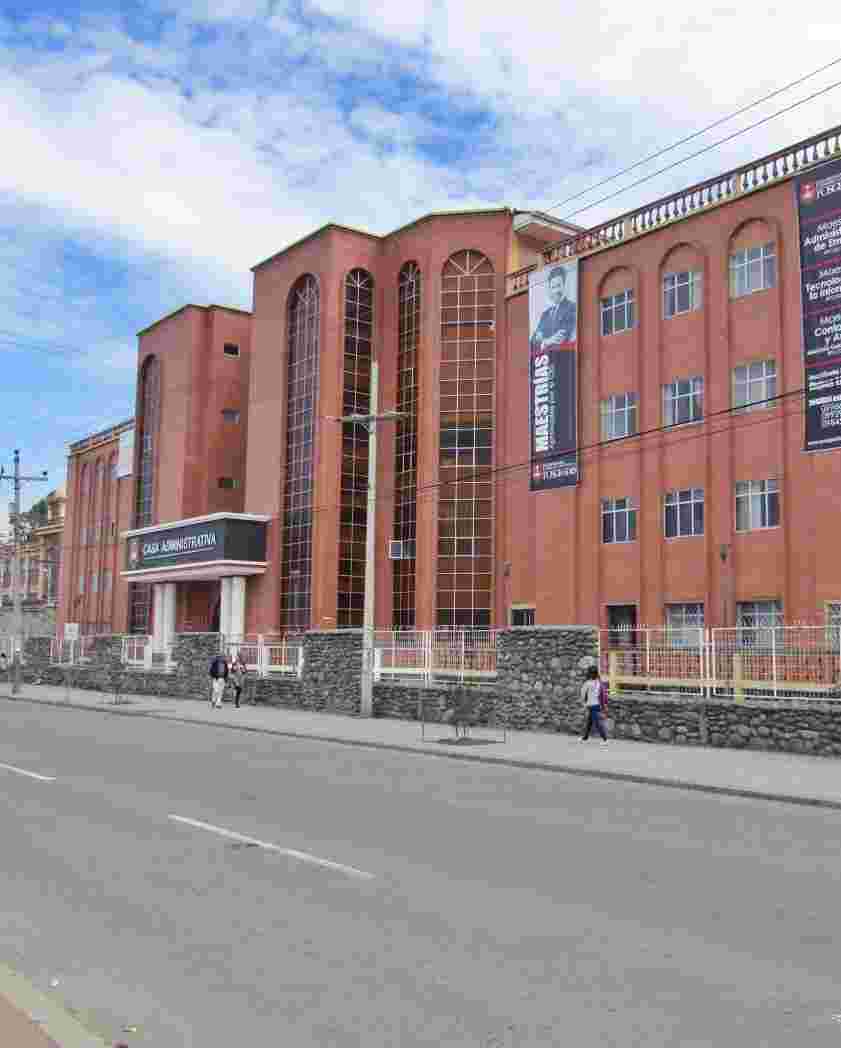Eficiencia de plantas de tratamiento tipo para agua residual implementadas en la parroquia Luis Cordero del cantón Azogues
| dc.contributor.advisor | Palomeque Larriva, Goethe Emmanuel | |
| dc.contributor.author | Criollo Almache, Andrés Josué | |
| dc.contributor.cedula | 0104826151 | es_ES |
| dc.contributor.other | ., . | |
| dc.coverage | Azogues - Ecuador | es_ES |
| dc.date.accessioned | 2022-07-27T20:55:51Z | |
| dc.date.available | 2022-07-27T20:55:51Z | |
| dc.date.issued | 2021 | |
| dc.description | El presente trabajo tuvo como objetivo analizar la eficiencia de depuración de las plantas de tratamiento de agua residual que fueron implementadas en las comunidades de María Auxiliadora y Quillopungo de la zona rural del cantón Azogues. Estos sistemas de tratamiento están compuestos por una fosa séptica y un filtro anaerobio, mismos que depuran el agua residual para evitar la contaminación que se generaría por la descarga de efluentes a un cuerpo receptor. El método de desarrollo consistió en realizar una encuesta sanitaria a la población servida, un análisis de la infraestructura de las plantas, aforo de los caudales de ingreso y descarga, así como la evaluación de la eficiencia de depuración por medio de la caracterización del agua, identificando el nivel de concentración de contaminantes presentes en el agua residual y el cuerpo receptor para finalizar con la estimación de la capacidad de asimilación del río Biblicay luego del vertido del efluente. Identificando problemas como las limitaciones de la infraestructura con relación al diseño, además, determinando que la concentración de contaminantes en los parámetros analizados es alta y por ello el proceso de depuración es deficiente, generando que el nivel de autodepuración del agua del cuerpo receptor sea muy bajo y tarde demasiado en estabilizarse. Concluyendo así, que el tipo de efluente que descargan las plantas de tratamiento no contribuyen en beneficio del ambiente ni de los habitantes de la parroquia. | es_ES |
| dc.description.abstract | The objective of this work was to analyze the purification efficiency of the wastewater treatment that were implemented in the communities of María Auxiliadora and Quillopungo from the rural area of the Azogues canton. These treatment systems are composed of a septic tank and an anaerobic filter, which purify the residual water for avoid the pollution that would be generated by the discharge of effluents to a receiving body. The The development method consisted of conducting a health survey of the population served, an analysis of the infrastructure of the plants, capacity of the inlet and discharge flows, as well as the evaluation of the purification efficiency through the characterization of the water, identifying the level of concentration of pollutants present in the wastewater and the receiving body for end with the estimation of the assimilation capacity of the Biblicay river after the discharge of the effluent. Identifying problems such as the limitations of the infrastructure in relation to the design, in addition, determining that the concentration of contaminants in the parameters analyzed is high and therefore the debugging process is deficient, generating that the level of self-purification of the receiving body water is very low and takes too long to stabilize. Thus concluding, that the type of effluent discharged by the treatment plants does not contribute to the benefit of the environment or the inhabitants of the parish. | es_ES |
| dc.description.peer-review | . | es_ES |
| dc.description.sponsorship | . | es_ES |
| dc.description.uri | Trabajo de investigación | es_ES |
| dc.format | application/pdf | es_ES |
| dc.format.extent | xvii, 191 páginas | es_ES |
| dc.identifier.citation | Criollo Almache, A.J. (2021) Eficiencia de plantas de tratamiento tipo para agua residual implementadas en la parroquia Luis Cordero del cantón Azogues. Universidad Católica de Cuenca. | es_ES |
| dc.identifier.doi | . | es_ES |
| dc.identifier.journal | . | es_ES |
| dc.identifier.other | 10BT2021-TCiv-12 | |
| dc.identifier.uri | https://dspace.ucacue.edu.ec/handle/ucacue/11886 | |
| dc.language.iso | spa | es_ES |
| dc.publisher | Universidad Católica de Cuenca. | es_ES |
| dc.relation | . | es_ES |
| dc.relation.ispartofseries | .;. | |
| dc.relation.uri | http://creativecommons.org/licenses/by/4.0/deed.es | es_ES |
| dc.rights | info:eu-repo/semantics/openAccess | es_ES |
| dc.rights.uri | http://creativecommons.org/licenses/by/4.0/deed.es | es_ES |
| dc.source | Universidad Católica de Cuenca | es_ES |
| dc.source | Repositorio Institucional - UCACUE | es_ES |
| dc.subject | Agua residual | es_ES |
| dc.subject | cuerpo receptor | es_ES |
| dc.subject | eficiencia | es_ES |
| dc.subject | planta de tratamiento | es_ES |
| dc.subject.ocde | Residual water | es_ES |
| dc.subject.ocde | receiving body | es_ES |
| dc.subject.ocde | efficiency | es_ES |
| dc.subject.ocde | treatment plant | es_ES |
| dc.title | Eficiencia de plantas de tratamiento tipo para agua residual implementadas en la parroquia Luis Cordero del cantón Azogues | es_ES |
| dc.title.alternative | . | es_ES |
| dc.type | info:eu-repo/semantics/bachelorThesis | es_ES |
| thesis.degree.discipline | Ingeniería, Industria y Construcción | es_ES |
| thesis.degree.grantor | Ucacue-Campus Universitario Azogues. Ingeniería Civil | es_ES |
| thesis.degree.level | Título Profesional | es_ES |
| thesis.degree.name | Pregrado | es_ES |
| thesis.degree.program | Presencial | es_ES |
Archivos
Bloque original
1 - 1 de 1
Cargando...
- Nombre:
- CRIOLLO ALMACHE ANDRÉS JOSUÉ.pdf
- Tamaño:
- 28.01 MB
- Formato:
- Adobe Portable Document Format
- Descripción:
- Consultar en biblioteca
Bloque de licencias
1 - 1 de 1
Cargando...
- Nombre:
- license.txt
- Tamaño:
- 1.71 KB
- Formato:
- Item-specific license agreed upon to submission
- Descripción:




